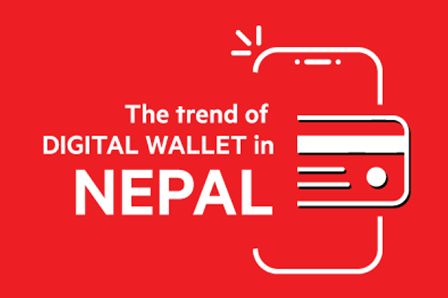
Often termed as an e-wallet or mobile wallet, the digital wallet is a platform that allows users to store money, make payments, and carry out financial transactions in a manner that is easy and convenient. It is basically a prepaid account in which the users have to load money before carrying out any kind of transaction.
As digitization started taking over in the financial sector, the need to carry out transactions in a digital manner rather than a conventional manner increased significantly. Since digital wallets are easy, and convenient, they are in the trend of replacing the conventional method of payment.
The rise of digital wallet apps has changed the way people carry out financial transactions. Digital wallets are not only convenient to use but also safer than traditional or conventional type wallets. In order to avail the services, the users are required to download the specific apps created by banks or trusted third parties.
The trend of moving ahead towards a cashless economy has surged rapidly making Covid 19 or the pandemic situation one of the contributing factor for the same. Nationwide lockdown and travel restriction resulted in unexpected demand for contactless or cashless transaction which led to increased dependency on digital wallet. From going truly contactless with mobile payments to carrying out banking transaction everything has been made seamless with digital wallets. Whether it be paying electricity bills or mobile recharge, you name it and everything is just in your fingertips.
While listing out the contributing factors towards such an exponential surge in the digital wallet sector, availability of smartphones at a cheaper rate, growth of internet broadband, and easy access to banking services are few that cannot be disregarded.
The era of digital wallets started around 2009 in Nepal since then there has been a significant spike in the digital sector of the country. The Covid-19 pandemic and nationwide lockdown catapulted the trend forcing users to adopt digital mode of receiving and making payments. As per the data released by Nepal Rastra Bank (NRB), a transaction worth Rs.36.86 trillion was transacted digitally in the first 9 months of the fiscal year 2077-2078 which depicts an increment of 26.21% as compared to last FY. It is estimated that currently there are about 4 million digital wallet users in Nepal who have shifted from ATM/credit cards to e-banking and mobile banking to M-wallet.
Today, Nepal has a handful of digital wallets that have played an important role in accelerating digital payment activities in the country. One of the most preferred digital wallets in the country has to be IME pay, a product of IME Digital Solution, which has more than 100 banking partners and 2500+ agent network. The one and only digital wallet in the country that accepts all kinds of QR payments, IME Pay has three different apps suitable for different groups of users namely: IME Pay Customer app, IME Pay Merchant app, and IME Pay Agent App.
The digital literacy awareness campaigns by fintech companies, incentive-based strategies built to convert the unbanked population to banked and the initiation to acquire new users by private players have led to successful changes in the digital economy. Nepal’s economy is in the path of digitization and a healthy digital economy can help in empowering Nepalese across all income strata.